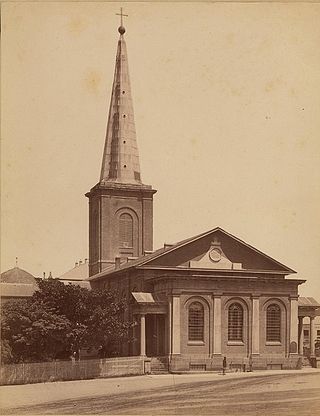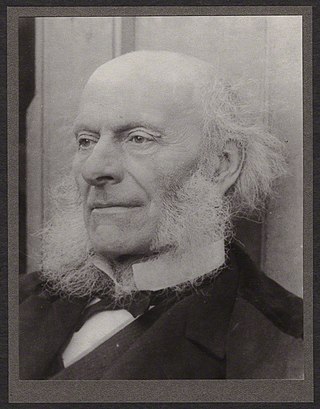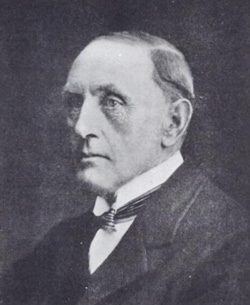Related Research Articles

In the United Kingdom a listed building is a structure of particular architectural and/or historic interest deserving of special protection. Such buildings are placed on one of the four statutory lists maintained by Historic England in England, Historic Environment Scotland in Scotland, Cadw in Wales, and the Northern Ireland Environment Agency in Northern Ireland. The term has also been used in the Republic of Ireland, where buildings are protected under the Planning and Development Act 2000, although the statutory term in Ireland is "protected structure".

A consistory court is a type of ecclesiastical court, especially within the Church of England where they were originally established pursuant to a charter of King William the Conqueror, and still exist today, although since about the middle of the 19th century consistory courts have lost much of their subject-matter jurisdiction. Each diocese in the Church of England has a consistory court.

Robert Mylne was a Scottish architect and civil engineer, particularly remembered for his design for Blackfriars Bridge in London. Born and raised in Edinburgh, he travelled to Europe as a young man, studying architecture in Rome under Piranesi. In 1758, he became the first Briton to win the triennial architecture competition at the Accademia di San Luca. This made his name known in London, and won him the rivalry of fellow Scot Robert Adam.
A clerk of works or clerk of the works (CoW) is employed by an architect or a client on a construction site. The role is primarily to represent the interests of the client in regard to ensuring that the quality of both materials and workmanship are in accordance with the design information such as specification and engineering drawings, in addition to recognized quality standards. The role is defined in standard forms of contract such as those published by the Joint Contracts Tribunal. Clerks of works are also the most highly qualified non-commissioned tradesmen in the Royal Engineers. The qualification can be held in three specialisms: electrical, mechanical and construction.
A churchwarden is a lay official in a parish or congregation of the Anglican Communion or Catholic Church, usually working as a part-time volunteer. In the Anglican tradition, holders of these positions are ex officio members of the parish board, usually called a vestry, parochial church council, or in the case of a Cathedral parish the chapter.

St Andrew's Cathedral is a cathedral church of the Anglican Diocese of Sydney in the Anglican Church of Australia. The cathedral is the seat of the Anglican Archbishop of Sydney and Metropolitan of New South Wales. The position of Dean of Sydney has been held by the Very Reverend Sandy Grant since 9 December 2021.

The New South Wales Government Architect, an appointed officer of the Government of New South Wales, serves as the General Manager of the Government Architect's Office (GAO), a multi-disciplinary consultancy operating on commercial principles providing architecture, design, and engineering services, that is an agency of the government within NSW Public Works.

The Health and Safety at Work etc. Act 1974 is an Act of the Parliament of the United Kingdom that as of 2011 defines the fundamental structure and authority for the encouragement, regulation and enforcement of workplace health, safety and welfare within the United Kingdom.

Francis Cranmer Penrose FRS was an English architect, archaeologist, astronomer and sportsman rower. He served as Surveyor of the Fabric of St Paul's Cathedral, and as President of the Royal Institute of British Architects and Director of the British School at Athens.
The Housing Grants, Construction and Regeneration Act 1996 is an Act of Parliament of the United Kingdom. Its long title shows that it is a piece of omnibus legislation:
According to both Catholic and Anglican canon law, a cathedral chapter is a college of clerics (chapter) formed to advise a bishop and, in the case of a vacancy of the episcopal see in some countries, to govern the diocese during the vacancy. In the Roman Catholic Church their creation is the purview of the pope. They can be numbered, in which case they are provided with a fixed prebend, or unnumbered, in which case the bishop indicates the number of canons according to the rents. These chapters are made up of canons and other officers, while in the Church of England chapters now include a number of lay appointees. In some Church of England cathedrals there are two such bodies, the lesser and greater chapters, which have different functions. The smaller body usually consists of the residentiary members and is included in the larger one.

A building engineer is recognised as being expert in the use of technology for the design, construction, assessment and maintenance of the built environment. Commercial Building Engineers are concerned with the planning, design, construction, operation, renovation, and maintenance of buildings, as well as with their impacts on the surrounding environment.

Sir Walter John Tapper was an English architect known for his work in the Gothic Revival style and a number of church buildings. He worked with some leading ecclesiastical architects of his day and was President of the Royal Institute of British Architects. Tapper was appointed Surveyor of the Fabric of Westminster Abbey and acted as consulting architect to York Minster and Manchester Cathedral. On his death in 1935 his son Michael Tapper completed some of his works.
Construction surveying or building surveying is to stake out reference points and markers that will guide the construction of new structures such as roads or buildings. These markers are usually staked out according to a suitable coordinate system selected for the project.
In the United Kingdom, the Architects Act 1997 imposes restrictions on the use of the name, style or title "architect" in connection with a business or a professional practice, and for that purpose requires a statutory Register of Architects to be maintained. The Architects Registration Board constituted under the Act is responsible for Architects Registration in the United Kingdom and is required to publish the current version of the Register annually. Every person who is entitled to be registered under the Act has the right to be entered in the Register. The Act consolidated previous enactments originating with the Architects (Registration) Act, 1931 as amended by the Architects Registration Act 1938. It applies to England, Wales, Scotland and Northern Ireland.
Sir Charles Reed Peers was an English architect, archaeologist and preservationist. After a 10-year gap following the death of Lieutenant-General Augustus Pitt Rivers in 1900, Peers became England's second Inspector of Ancient Monuments from 1910 and was then the first Chief Inspector of Ancient Monuments from 1913 to 1933.

Corinne Marie Gillian Bennett MBE was an English conservation architect. She worked on the restoration and preservation of many historic buildings in England throughout her career, including Winchester Cathedral and the Royal Pavilion. She worked for the National Trust in the 1980s and became the first national cathedrals architect for English Heritage in 1991.

The Surveyor of Buildings also known as the Department of the Surveyor of Buildings was the civil officer initially a member of the Navy Board then later the Board of Admiralty responsible for superintending, maintaining and improving the British Royal Navy Dockyards, Naval Buildings, and Architectural Works of the Admiralty from 1812 to 1837.

The post of Surveyor of the Fabric of Westminster Abbey was established in 1698. The role is an architectural one, with the current holder being responsible for the upkeep and maintenance of the Abbey and its buildings. In the past, the role has involved overseeing new construction work as well as restoration and architectural conservation. The post has been held by the following people:
- Christopher Wren (1698–1723)
- Nicholas Hawksmoor (1723–1736)
- John James (1736–1746)
- James Horne (1746–1752)
- Henry Keene (1752–1776)
- James Wyatt (1776–1813)
- Benjamin Dean Wyatt (1813–1827)
- Edward Blore (1827–1849)
- George Gilbert Scott (1849–1878)
- John Loughborough Pearson (1878–1897)
- John Thomas Micklethwaite (1897–1906)
- William Lethaby (1906–1928)
- Walter Tapper (1928–1935)
- Charles Reed Peers (1935–1951)
- Stephen Dykes Bower (1951–1973)
- (John) Peter Foster (1973–1988)
- Donald Buttress (1988–1999)
- John Burton (1999–2012)
- Ptolemy Dean (2012–present)

The post of Surveyor of the Fabric of St Paul's Cathedral was established in 1675. The role is an architectural one, with the current holder being responsible for the upkeep and maintenance of the cathedral and its buildings. In the past, the role has involved overseeing new construction work as well as restoration and architectural conservation. The post has been held by the following people:
- Christopher Wren (1675–1723)
- John James (1723–1746)
- Henry Flitcroft (1746–1756)
- Stiff Leadbetter (1756–1766)
- Robert Mylne (1766-1811)
- Samuel Pepys Cockerell (1811–1819)
- Charles Robert Cockerell (1819–1852)
- Francis Penrose (1852–1897)
- Somers Clarke (1897–1906)
- Mervyn Edmund Macartney (1906–1931)
- Walter Godfrey Allen (1931–1956)
- John Seely, Lord Mottistone (1956–1963)
- Paul Edward Paget (1963–1969)
- Bernard Feilden (1969–1977)
- Robert Potter (1978–1984)
- William Whitfield (1985–1990)
- Martin Stancliffe (1990–2011)
- Oliver Caroe (2011–present)
References
- ↑ By section 12(1) of the 2005 Care of Cathedrals (Amendment) Measure, chartered surveyors were included and well as architects registered under the Architects Act 1997
- ↑ Care of Cathedrals Measure 1990, section 12
- 1 2 3 The Role and Duties of the Cathedral Architect or Surveyor of the Fabric